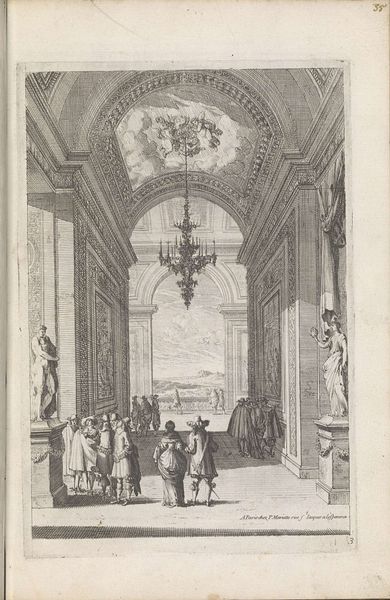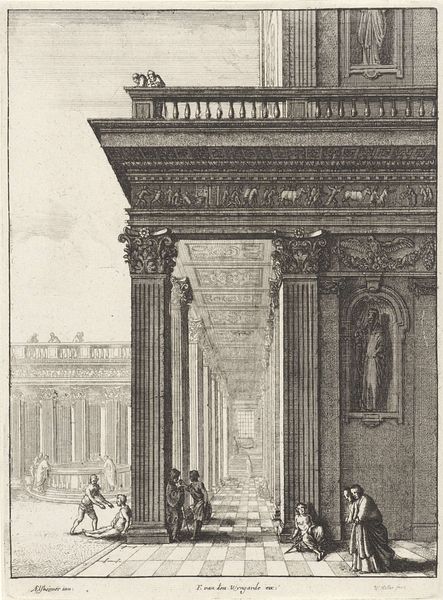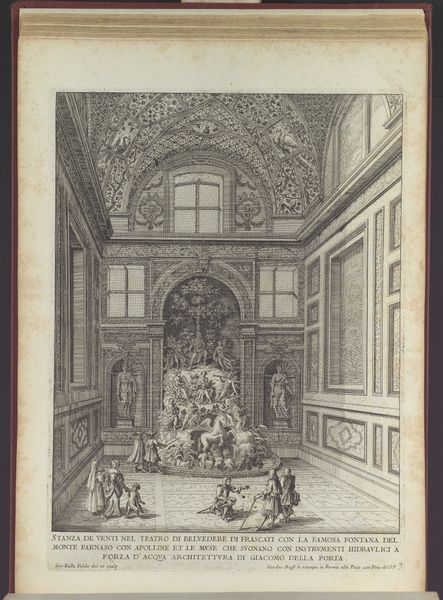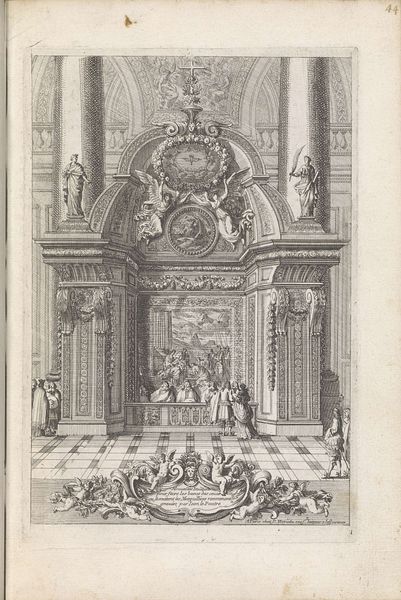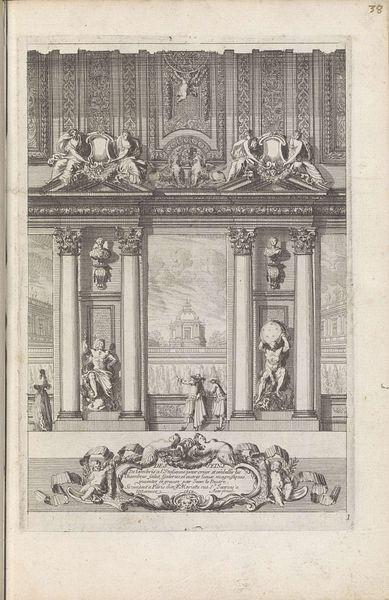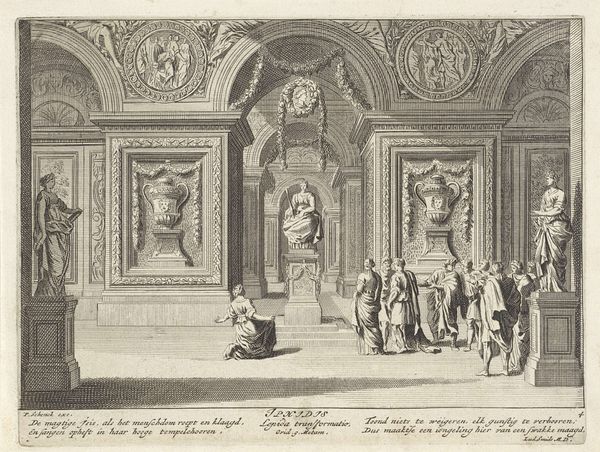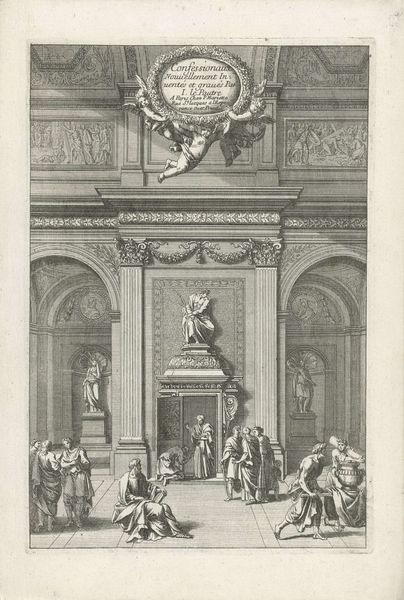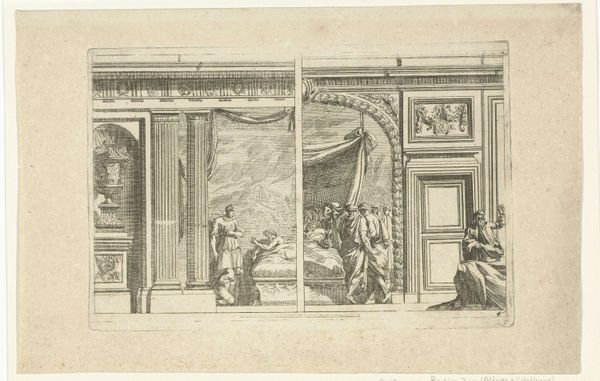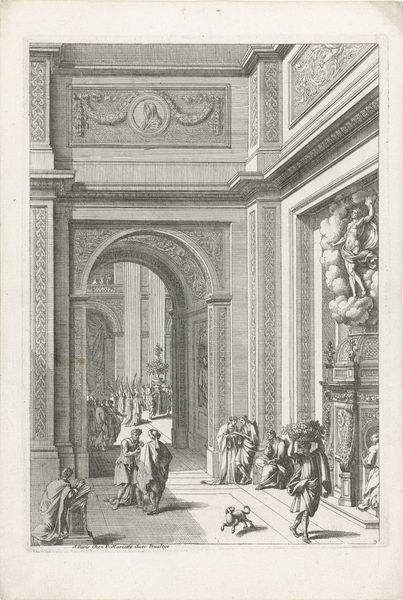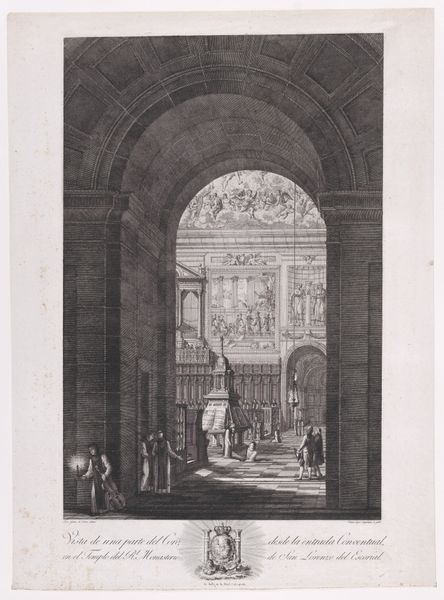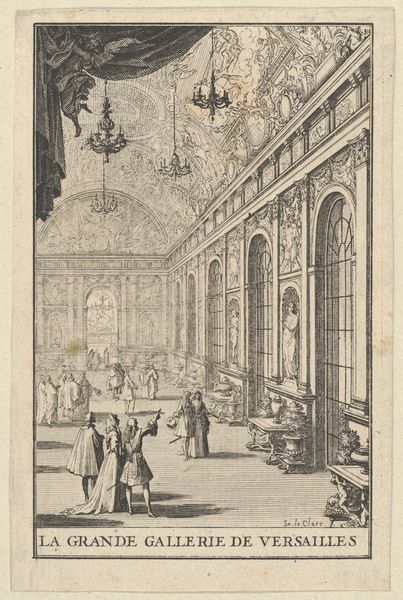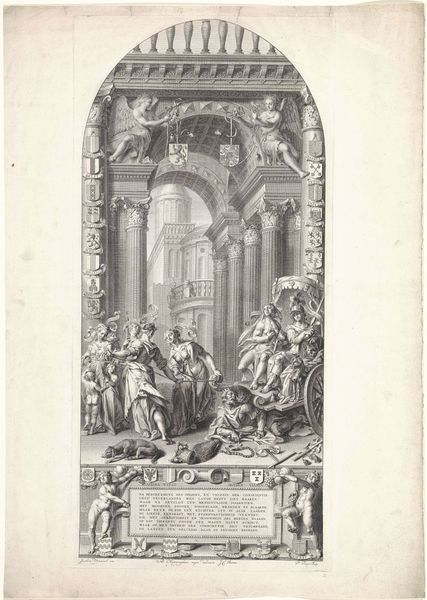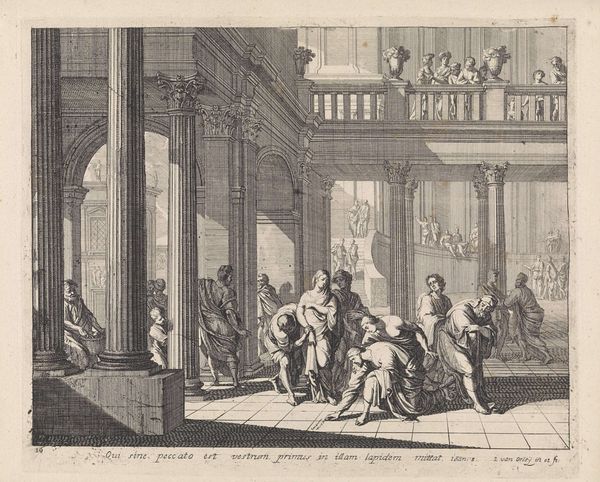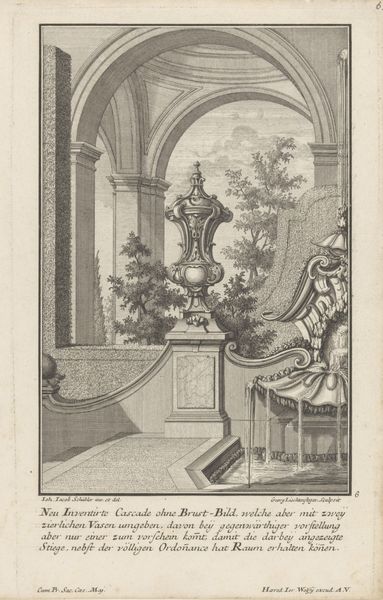
drawing, print, engraving
#
drawing
#
baroque
# print
#
form
#
line
#
cityscape
#
genre-painting
#
history-painting
#
engraving
Dimensions: height 225 mm, width 152 mm
Copyright: Rijks Museum: Open Domain
Curator: This image by Jean Lepautre, created in 1659 and titled "Galerij van een paleis," invites us into an opulent palace gallery. What are your first impressions? Editor: The detail is astounding for an engraving! The scene almost feels theatrical, a carefully staged performance of courtly life frozen in time. The light seems incredibly precise. Curator: Lepautre was a master of capturing such grandeur, wasn't he? His baroque style, especially his skill with line, gives form and depth to every detail from the ornate ceilings to the figures in the gallery. It speaks of the era's desire to convey absolute power through aesthetics. Editor: It's intriguing how the people are arranged; the clusters create distinct visual focuses. Could it be highlighting power dynamics within the court, with smaller gatherings seeking the favor of someone of significance? Curator: That's a shrewd observation! And the figures themselves; notice the way they’re posed, their gestures suggesting unspoken narratives and the intricacies of social interaction, echoing traditions and established societal expectations of status, dress, and poise. Editor: The tapestries, too; they add a layer of symbolic storytelling, don't they? What could their presence communicate about the owner of this place? Prestige, perhaps? Certainly affluence and elevated taste. Curator: Without question! Think about the implications of choosing to display such elaborate tapestries; consider their psychological influence. Lepautre's choice of representing that degree of ostentation provides powerful insight. Editor: Yes, and it makes you wonder about the role of art within these halls, beyond decoration. It shapes the narrative and dictates power relationships, serving almost as a script for appropriate conduct. Curator: Absolutely. A visual manifesto shaping perceptions. Before we move on, I wonder how our audience is considering their personal interpretations? Editor: It's all too easy to view history from a fixed point in time. Works like these require constant review so that we are not the ones standing still, blind to current, developing implications.
Comments
No comments
Be the first to comment and join the conversation on the ultimate creative platform.
